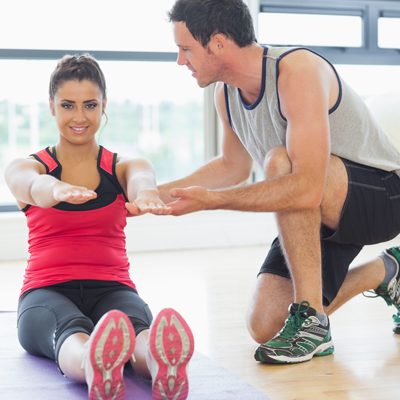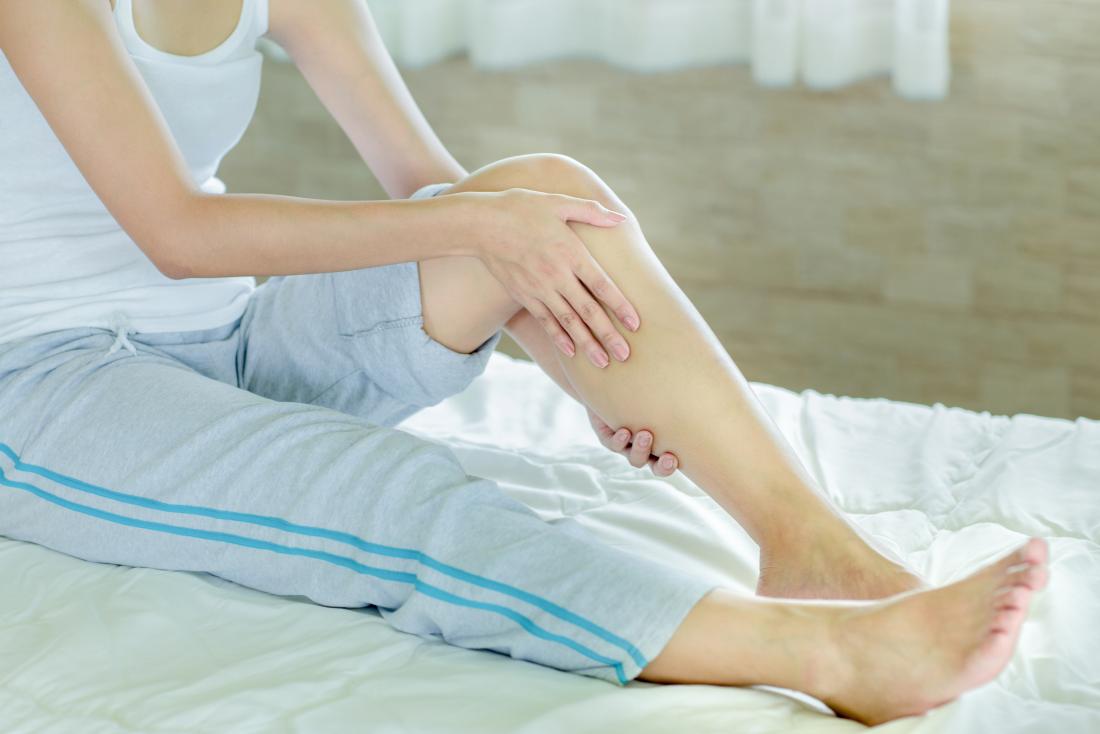Muscle cramps happen when there is a sudden and continuous contraction of one or more of the whole muscle group system. Muscle cramps are generally not harmful; however, they cause severe pain and temporarily disable the muscle.
The symptom of a muscle cramp is a hard lump and temporary twitching of the skin. Another common sign of muscle cramps is a sudden and painful or tightness of the muscle, mostly on the calf, back thigh, and the front thigh.
A muscle cramp can last just for a few seconds to minutes. The cramping pain involves the entire body system, both the emotional and somatic.
What Causes Muscle Cramping?
One of the significant causes of muscle cramping is the deficiency of potassium in the body, a condition known as hypokalemia. Potassium is an essential micronutrient that aids the body to pump the heart, the contraction of the muscles and firing of the neurons.
When there are low levels of potassium in the blood, the brain cannot send the contractions effectively. It delays the contractions, thus causing muscle cramps.
Additionally, excessive potassium in the body results in muscle cramping, which causes painful muscle pains. So, you have to strike a balance to avoid the effects of deficiency and excessive potassium in the body.
What Are Other Causes of Muscle Cramping?
Starting vigorous sporting activities without warming causes muscle cramps. Exercising without a warm-up is a common cause of muscle cramps.
Another cause major cause of muscle cramping is reduced blood flow due to atherosclerosis. The condition is caused due to the constriction of the muscles due to cold at night or other factors.
The compression of the nerves in the lunar is another cause of muscle cramping in the legs. Walking for a long time causes the compression of the nerves. Take rest in between long walks to prevent muscle cramping.
Another common cause of muscle cramping is a prolonged time of inactivity. For instance, sitting for at your desk for a lengthy time can result in a muscle cramp. Take breaks to stretch regularly during the working hours.
Wrong positioning of the body can result in muscle cramps. For instance, crossing legs or resting on the leg on top of the other can cause muscle cramps. Wrong body posture restricts the free movement of blood in the body resulting in muscle cramps.
Does Ketogenic Diet Affect The Levels Of Electrolytes In The Blood?
Today, a high number of people are opting for a keto diet to keep fit and stay healthy. A keto diet comprises of moderate intake of proteins, high fats, and low-carbohydrates. But is Ketogenic completely safe? Not absolutely, studies show that a keto diet can cause severe effects such as keto flu, nutritional concerns, heart, and kidney damage.
The ketogenic diet restricts you from eating a wide range of fruits, food types, and vegetables. The restriction leaves the body deprived of the essential nutrients and vitamins. Additionally, the results achieved from the Ketogenic diet are short-term.
To avoid muscle cramping while on the keto diet, you should include a natural source of potassium in the keto diet, however, you should remember that too much potassium in the body causes muscle cramping too.
Due to the low intake of essential electrolytes such as sodium, the kidneys excrete too much potassium. The loss of potassium in the body causes muscle irritability, which leads to muscle cramping.
The ketogenic diet causes dehydration and the imbalance of electrolytes such as potassium, calcium, and magnesium. Your body uses all glycogen in the body when you switch from using glucose to ketone energy.
Glycogen helps in retaining water in the body. So, when the glycogen is used up, the body loses water through urine, causing dehydration. Dehydration is a known cause of muscle cramping.
If you are not getting these electrolytes from your keto diet, consider a diet change or take the dietary supplements. Also, consider taking foods that rich in these electrolytes. Examples of these foods are:
- Potassium– Leafy and green vegetables such as spinach, Swiss chard, mushrooms, broccoli, and zucchini.
- Magnesium– Eat whole foods, chia seeds, pumpkin seeds, avocado, bananas, and avocado.
- Sodium-It helps to maintain the fluid levels in the cells. Take a little table salt into your water or food.
How to Prevent and Get Rid of Muscle Cramping
Muscle cramping is not a severe medical condition. However, if it happens frequently or accompanied by severe symptoms, it could indicate an underlying medical condition. The following are ways to prevent and treat muscle cramping at home. If the condition does not improve, talk to your doctor.
- Stretch the Cramped Muscles
Regular stretching of the muscles prevents and cures muscle pain. Simple exercises such as walking or jogging help to relieve muscle pains and cramps. Rub the cramped muscles gently as you stretch.
If you have a calf muscle cramp, exert your body weight on the affected leg and slightly bend your knee. Alternatively, sit on a chair or floor and stretch out the affected leg.
For the front thigh muscle cramping, get your body steady using a chair, try pulling the affected leg towards the buttocks. If your back thigh is cramped, keep the leg straight and pull the affected leg towards your head.
Before you engage in any sporting activities, do a few warm-up exercises. Failure to warm-up will result in muscle cramps after you exercise.
- Gently Massage the Affected Muscles
If you have a muscle cramp as a result of body exercise, you will experience fluid loss. Gently massaging the cramped muscle with a hot soak or a thermal pad helps to relieve the pain. Massages help to replace the lost electrolytes during vigorous physical activity.
- Increase the Intake of Electrolytes
The deficiency of calcium and potassium leads to dehydration, which causes regular muscle cramps. Take foods rich in these minerals such as milk, vegetables, and fruits. Additionally, you can use vitamin supplements to meet the deficiency of these minerals. For potassium, eat mangoes, black beans, and bananas.
If you are under blood pressure medication, you are likely to suffer these mineral deficiencies. You are likely to experience frequent muscle cramping. Take enough supplements to curb the deficit.
- Talk to Your Doctor
Usually, muscle cramps last only for a few seconds or minutes. If you have tried home remedies and still have severe or prolonged muscle cramps, its best to see a doctor. If the leg swell, skins turn red, or you experience extreme discomfort due to muscle cramps, see a doctor for immediate treatment.
- Stay Hydrated
Ensure you are drinking at least eight glasses of water daily. Dehydration is one of the causes of muscle cramping. Water helps in the transportation of fluids and removal of waste from the muscles and keeps them in proper working condition.
- Wear Comfortable Shoes
Uncomfortable shoes not only slow you down but can result in leg cramps. Consider wearing comfortable and supportive shoes to prevent muscle cramping.
What Are The Risk Factors For Muscle Cramps?
Muscle cramps are associated with older people, but it attacks anyone. The following are factors that accelerate the risk of muscle cramps:
- Dehydration– Athletes exercising in warm weather are likely to experience dehydration, thus muscle cramps.
- Age-Older people experience frequent muscle cramps compared to younger people.
- Pregnancy– Pregnant women experience frequent muscle cramps.
- Medical Conditions– If you have illnesses such as liver disease, diabetes, nerve, or thyroid disorders, you are likely to experience muscle cramps.
Several factors cause muscle cramping. Most of these causes can be prevented and treated at home. Muscle cramping lasts only for a few seconds to a few minutes. However, if the muscle cramps last longer or too frequently, talk to your doctor.
Additionally, if your diet plan does not meet the nutrient requirement, ensure you are taking supplements, vegetables, and fruits.





 Users Today : 447
Users Today : 447 Users Yesterday : 427
Users Yesterday : 427 This Month : 6756
This Month : 6756 Total Users : 787747
Total Users : 787747